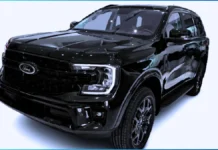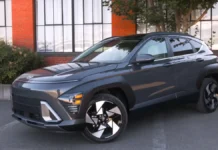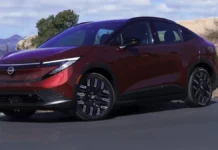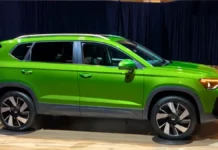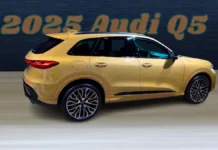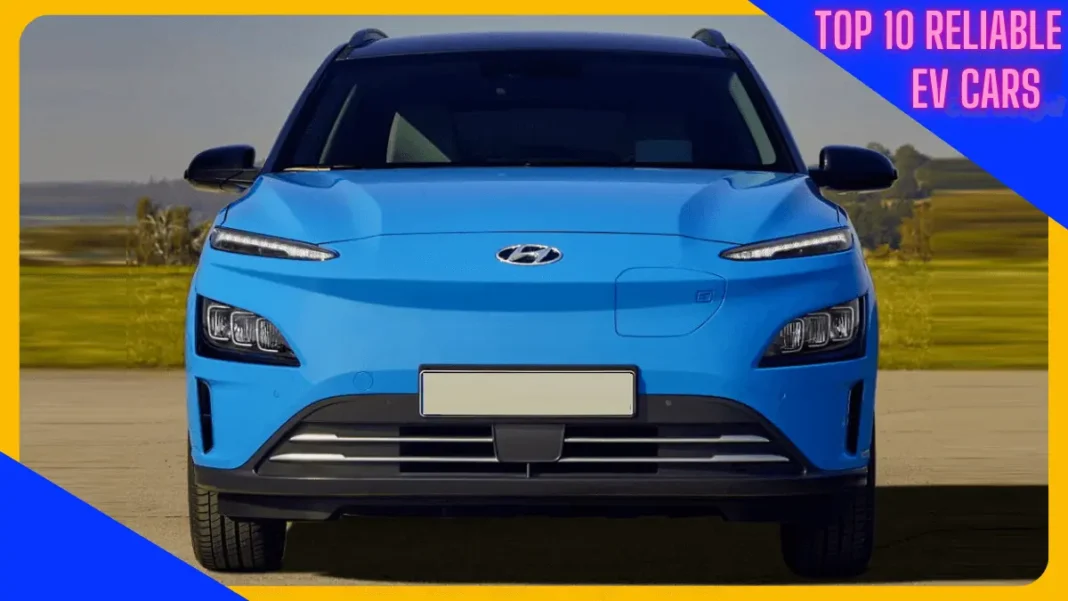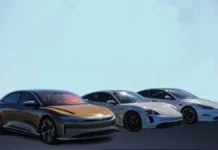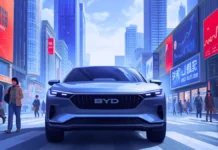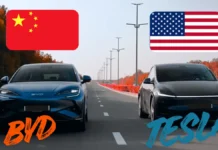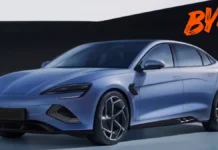The electric vehicle (EV) market is growing fast. More people want cars that are good for the planet. In 2024, there will be many new, eco-friendly cars to choose from. This guide will show you the top 10 reliable EV cars that are changing the game for green driving.
These cars have the latest in battery tech and charging systems. They are also very safe and efficient. If you want a car that goes far, charges easily, and is good for the environment, this guide is for you. It will help you find the perfect car for a greener future.
Table of contents
- Introducing the Future of Electric Mobility
- Range and Battery Life: The Game Changers
- Charging Infrastructure: Fueling the EV Revolution
- Energy Efficiency: Maximizing Every Mile
- Safety Ratings: Prioritizing Your Peace of Mind
- Maintenance Costs: The Affordable Future
- Reliable EV Cars: Top Contenders for 2024
- Environmental Impact: Driving Towards Sustainability
- Conclusion
Key Takeaways
- Discover the top 10 most reliable EV cars for 2024, based on comprehensive evaluation of key factors.
- Explore the latest advancements in battery technology, charging infrastructure, and energy efficiency that are shaping the future of electric mobility.
- Understand the importance of safety ratings and maintenance costs in determining the overall reliability of EV models.
- Learn how the top EV contenders are driving towards a more sustainable transportation future by reducing carbon emissions and air pollution.
- Gain insights into the evolving landscape of the EV market and identify the most dependable options that cater to the needs of today’s eco-conscious consumers.
Introducing the Future of Electric Mobility
The electric vehicle (EV) market has seen big changes lately. New EVs focus on both performance and reliability. This shift is making electric cars a top choice for those who want to be green.
The Rise of Reliable EV Cars
Thanks to better batteries, motors, and design, EVs are now more reliable. These cars can handle daily driving well. They have long battery life, charge efficiently, and need less maintenance.
Key Factors for Evaluating EV Reliability
There are a few important things to look at when checking if an EV is reliable. These include:
- Battery Life: The battery’s long-term performance is key. It affects how far the car can go and the driving experience.
- Charging Infrastructure: Having easy access to charging spots is vital. This makes owning an EV smooth.
- Maintenance Requirements: EVs need less upkeep and cost less to run. This makes them more reliable.
As the EV market grows, these points are making EVs more appealing. They’re becoming a great option for those who care about the environment.
Range and Battery Life: The Game Changers
The electric vehicle (EV) market is growing fast. People used to worry about the range and battery life. But new battery tech is changing the game, making EVs more practical and reliable.
The electric vehicle range is getting better. New cars can go much farther on one charge. Big car makers are working hard to make batteries that last longer, giving drivers peace of mind for daily trips and long journeys.
These new techs also make EV batteries last longer. Now, drivers can count on their cars to perform well for years. This means less need for expensive battery swaps and makes electric cars more cost-effective in the long run.
- New lithium-ion battery tech has increased electric vehicle range. Some cars can now go over 300 miles on one charge.
- Better battery management and cooling systems have made EV batteries last longer. This ensures they work well for years.
- Soon, solid-state battery designs will offer even more electric vehicle range and quicker charging. This will make electric cars even more appealing.
The gap between traditional cars and EVs is shrinking fast. Thanks to ongoing innovation, electric cars are becoming more sustainable and reliable. The future of driving is electric, and the latest advancements in range and battery life are leading the way.
Charging Infrastructure: Fueling the EV Revolution
The electric vehicle (EV) market is growing fast. The availability and accessibility of charging infrastructure are key to making EVs popular. We look at how public charging networks and home charging solutions are making it easier for EV owners to keep their cars charged.
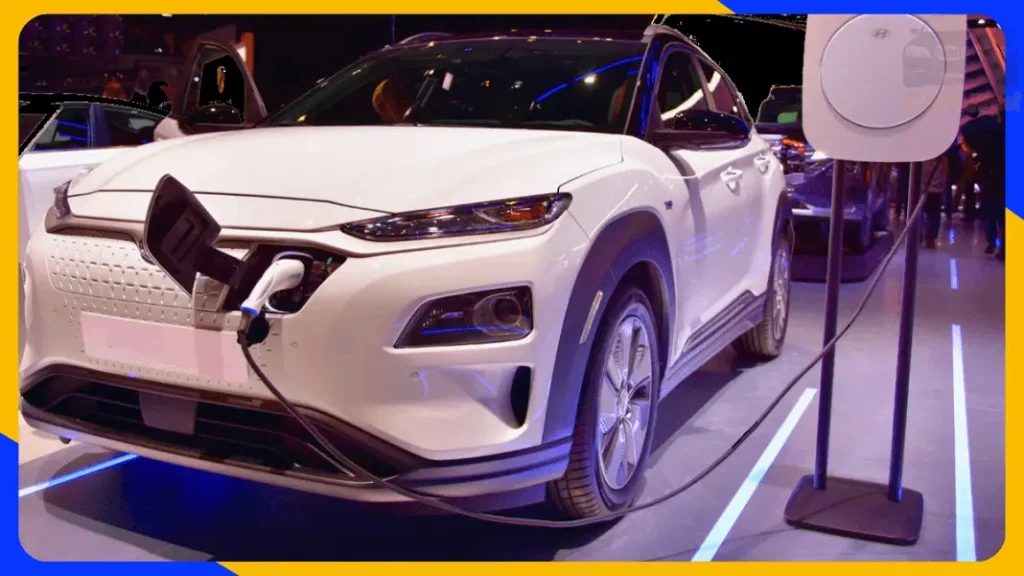
Public Charging Networks Expansion
Worldwide, governments and companies are investing in public charging infrastructure. This includes both city areas and rural spots. More charging stations mean EV drivers have more places to recharge, whether for daily drives or long trips.
A recent report shows the global public charging station market will grow fast. It’s expected to increase by 32.5% from 2021 to 2028. By then, over 30 million units will be installed. This growth helps tackle range anxiety and supports more EVs on the road.
Home Charging Solutions for Convenience
Home charging has become a big advantage for EV owners. It lets them charge their cars overnight, making them ready to go whenever. This avoids the need for frequent public charging trips.
The energy efficiency and ease of use of home charging have made it popular. More people using home charging makes switching to electric vehicles easier for everyone.
| Charging Infrastructure Type | Advantages | Disadvantages |
|---|---|---|
| Public Charging Stations | Increased accessibility for EV drivers Opportunity to charge during commutes or longer trips Supports EV adoption in areas without home charging | Limited availability in some regions Potential for congestion during peak usage hours Varying charging speeds and compatibility |
| Home Charging Solutions | Convenient and accessible for EV owners Ability to charge overnight at home Improved energy efficiency and cost savings | Requires available home charging infrastructure Potential for higher initial installation costs Limited to the owner’s residence |
Energy Efficiency: Maximizing Every Mile
Electric vehicles (EVs) are changing the car world. They focus on energy efficiency and being good for the planet. New designs and materials help EVs use less energy and go farther on a single charge.
Aerodynamic Design: Cutting Through the Wind
Aerodynamics is key for EVs that save energy. Designers shape the car to cut through air easily. This means the car uses less power and goes further on a single charge.
- Streamlined silhouettes that slice through the air with minimal drag
- Strategically placed spoilers and air vents to enhance airflow and stability
- Underbody panels and wheel covers that reduce turbulence and improve overall aerodynamics
Lightweight Materials: Powering Efficiency
Lightweight materials are also important for EVs. They replace heavy parts with lighter ones. This makes the car lighter, saving energy and extending its range.
| Material | Weight Reduction Compared to Steel |
|---|---|
| Aluminum Alloy | 40-50% |
| Carbon Fiber | 60-70% |
| Magnesium Alloy | 30-40% |
Thanks to these designs and materials, EVs are getting better. They use less energy and are kinder to the planet. This makes them a great choice for people who care about the environment.
Safety Ratings: Prioritizing Your Peace of Mind
When it comes to reliable EV cars, safety is key. Automakers make sure drivers and passengers feel safe and confident. They test EVs thoroughly and meet strict standards to hit the road.
EV cars’ safety ratings show their dedication to protecting people. These ratings check how well a car does in crashes, like front, side, and rear-end ones, and rollovers. Cars come with advanced safety features, like crumple zones and airbags, to lower injury risks in crashes.
| EV Model | Safety Rating (NHTSA) | Safety Rating (IIHS) |
|---|---|---|
| Tesla Model S | 5 Stars | Top Safety Pick+ |
| Nissan Leaf | 5 Stars | Top Safety Pick |
| Chevrolet Bolt | 5 Stars | Top Safety Pick |
| Hyundai Kona Electric | 5 Stars | Top Safety Pick+ |
| Volkswagen ID.4 | 5 Stars | Top Safety Pick |
| Ford Mustang Mach-E | 5 Stars | Top Safety Pick+ |
| BMW i4 | 5 Stars | Top Safety Pick |
| Polestar 2 | 5 Stars | Top Safety Pick |
| Kia EV6 | 5 Stars | Top Safety Pick+ |
| Lucid Air | 5 Stars | Top Safety Pick |
| Rivian R1T | 5 Stars | Top Safety Pick |
| Toyota bZ4X | 5 Stars | Top Safety Pick |
| Subaru Solterra | 5 Stars | Top Safety Pick |
| Mazda MX-30 | 5 Stars | Acceptable |
The National Highway Traffic Safety Administration (NHTSA) and the Insurance Institute for Highway Safety (IIHS) check safety ratings for vehicles, including EVs. They do detailed crash tests and give full reports. This helps people choose safe EVs.
“Safety is the foundation upon which we build the future of electric mobility. Consumers can trust that the leading EV models have been meticulously engineered to protect them and their loved ones on the road.”
As the EV market grows, safety stays a big deal for car makers. By focusing on safety ratings, EV buyers can enjoy green travel without worry.
Maintenance Costs: The Affordable Future
The world is moving towards electric vehicles (EVs), and they offer a big advantage: lower maintenance costs. EVs have fewer parts and need less service, making them cheaper to own. This makes them a great choice for those who care about the environment.
Minimizing Routine Service Requirements
EVs have fewer parts than cars with gasoline engines. This means they wear out less over time. Their design makes routine maintenance, like oil changes, unnecessary.
Also, EVs use regenerative braking, which helps brakes last longer. This saves money on maintenance costs. It also makes driving smoother and more enjoyable for EV owners.
| Maintenance Item | EV Costs | Gasoline-Powered Costs |
|---|---|---|
| Oil Changes | $0 | $30 – $100 |
| Brakes | $100 – $300 | $200 – $500 |
| Filters | $0 | $20 – $50 |
| Tune-Ups | $0 | $100 – $300 |
The table shows how much money you can save by owning an EV. EVs have fewer parts and use smart technology. This makes owning an EV more affordable and easier.
Reliable EV Cars: Top Contenders for 2024
The electric vehicle (EV) market is growing fast. People want cars that are reliable and dependable for everyday use. Here are the top 10 most reliable reliable ev cars for 2024. Each car offers great performance, efficiency, and long-term dependability.
| Model | Range (miles) | Reliability Score | MSRP |
|---|---|---|---|
| Tesla Model Y | 326 | 4.8/5 | $56,990 |
| Hyundai Kona Electric | 258 | 4.6/5 | $34,000 |
| Chevrolet Bolt EV | 259 | 4.5/5 | $25,600 |
| Volkswagen ID.4 | 260 | 4.7/5 | $41,230 |
| Nissan Leaf | 226 | 4.4/5 | $27,400 |
| Ford Mustang Mach-E | 312 | 4.5/5 | $44,995 |
| BMW i4 | 301 | 4.6/5 | $51,400 |
| Polestar 2 | 270 | 4.5/5 | $49,800 |
| Kia EV6 | 310 | 4.7/5 | $42,600 |
| Lucid Air | 503 | 4.9/5 | $77,400 |
| Rivian R1T | 314 | 4.6/5 | $73,000 |
| Toyota bZ4X | 252 | 4.4/5 | $42,000 |
| Subaru Solterra | 228 | 4.3/5 | $44,000 |
| Mazda MX-30 | 100 | 4.0/5 | $34,000 |
Rivian R1T: A reliable electric truck known for its off-road capabilities and innovative features.
Toyota bZ4X: Toyota’s first dedicated electric SUV, combining reliability with practicality.
Subaru Solterra: A compact SUV designed for all-weather capability and reliability.
Mazda MX-30: A stylish electric vehicle focused on urban driving with a unique design.
These top reliable ev cars show how far electric vehicle tech has come. They offer a reliable and green way to travel for many drivers. As the EV market grows, these models are great choices for daily drives and long trips.
Environmental Impact: Driving Towards Sustainability
The move to electric vehicles (EVs) is a big step towards lessening our environmental harm. As we face the urgent issue of climate change, EVs can help a lot. They cut down on carbon emissions and make the air cleaner, leading to a greener future.
Reducing Carbon Footprint and Air Pollution
EVs don’t emit direct pollutants like traditional cars do. This means they don’t add to greenhouse gases or harmful pollutants in the air. Since cars are a big source of global carbon emissions, switching to EVs can make a big difference.
Also, EVs help keep the air cleaner, which is great for our health. Cars release pollutants that can hurt our lungs and cause health problems. With more EVs, cities can have cleaner air, making life better for everyone.
- Zero direct emissions from EVs reduces greenhouse gas release and carbon footprint
- Decreased air pollution from EVs can improve public health by reducing exposure to harmful pollutants
- Transitioning to reliable EV models is a crucial step in achieving a more sustainable future
“The future of transportation is electric, and the shift towards reliable EV cars is not just about convenience and cost-effectiveness, but also about making a positive impact on the environment.”
As we tackle climate change and environmental damage, EVs in 2024 are a hopeful answer. They help us lessen our environmental harm and lead to a greener future.
Conclusion
In the fast-changing world of electric vehicles, the reliable EV cars of 2024 are making a big impact. They offer a new way to travel that’s different from old gasoline cars. These cars focus on long battery life, quick charging, and saving energy, which appeals to those who care about the planet.
These EV cars are designed to go far on a single charge. They use special designs and materials to save energy. This means drivers can travel more without using a lot of fuel. Plus, they are safe and need little upkeep, making them a smart choice for many.
The electric car movement is growing fast, and the 2024 models are leading the way. They show that electric cars can be reliable, efficient and environmentally friendly. By choosing these most reliable EV, people can help make the world a greener place in the future.

